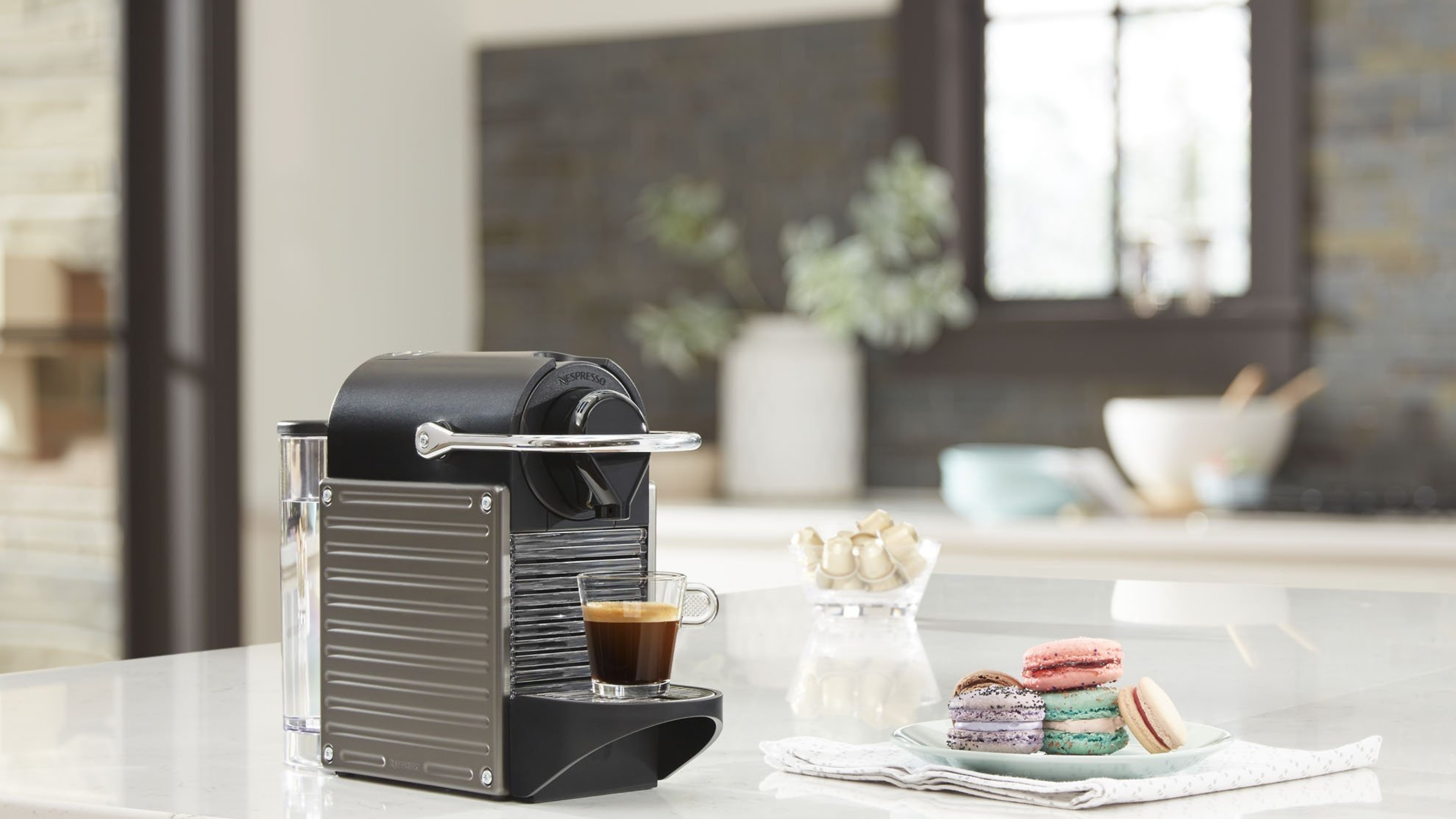
1. TLDR
2. Testing
3. Important stuff
4. Unboxing and setup
5. Using the espresso maker
6. Cleaning and maintenance
7. Where to buy
8. Is it right for you?
9. How we test
The Nespresso Pixie is the Tinkerbell of tiny coffee makers. It's compact, cute, not to mention magical (especially in the morning). However, unlike this fictional character, this machine will make all your black coffee wishes come true in real life.
But my main reason for wanting to try the Nespresso Pixie out? Apparently, it's one of the brand's fastest single-cup coffee makers with only a 25-second heat-up time, and ergonomic enough to fit in any small kitchen. As well as delivering short shots in under half a minute, this popular espresso maker can also make longer drinks for those who prefer something closer to an Americano. Plus something in the middle with the automatic flow stop feature.
On looks alone, this small coffee maker means business. I was sent the aluminum option to test, but this baby is also available in an Electric Tritan colorway. Both colors boss the industrial-chic aesthetic, but will it stand up to the bigger coffee makers? Let's find out!
Nespresso Pixie review
What I thought of the Nespresso Pixie
The Nespresso Pixie has a sleek, modern design in a compact shape. For space-challenged households, this coffee maker a welcome alternative to bulkier espresso machines that can eat up a significant amount of counter space and are hard to store when not in use.
In addition, this Nespresso maker provides the level of convenience desired by those who prefer the ease of inserting capsules over measuring and scooping ground filters. The two-button operation provides further simplicity and is appealing to those who don’t want the hassle of learning a complex operating process. But for all of its simplicity, the machine doesn’t compromise on taste or appearance. It delivers a great-tasting shot of coffee, in a stylish design, at a reasonable price.
Testing the Nespresso Pixie
Nespresso Pixie specifications
- Model name: Nespresso Pixie in aluminum
- Dimensions (in.): H9.3 x W4.4 x D12.8
- Weight (lb): 5.58 pounds
- Water tank capacity (oz): 24 ounces
- Container capacity: 9-11 used capsules
- Voltage: 120 V
- Wattage: 1160 W
Unboxing and setting up the Nespresso Pixie
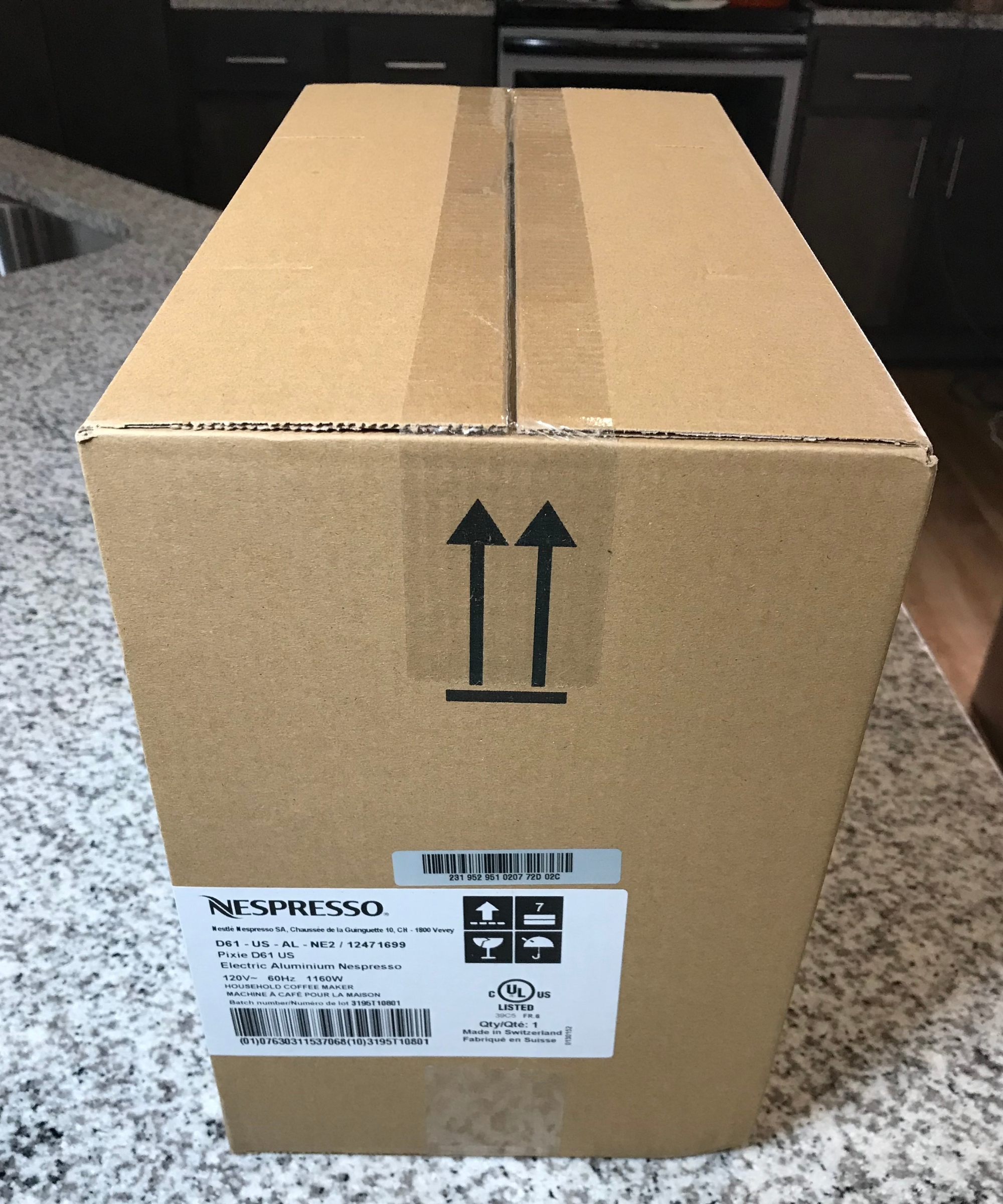
The Nespresso Pixie Espresso Maker arrived in a brown shipping box (along with another Nespresso model that I’m testing), and inside of that, a brown, Nespresso-branded shipping box. Inside of that box was another Nespresso-branded box with a convenient carrying handle. The machine was certainly well-packaged and included molded cardboard on the top and the bottom to keep it protected and firmly in place.
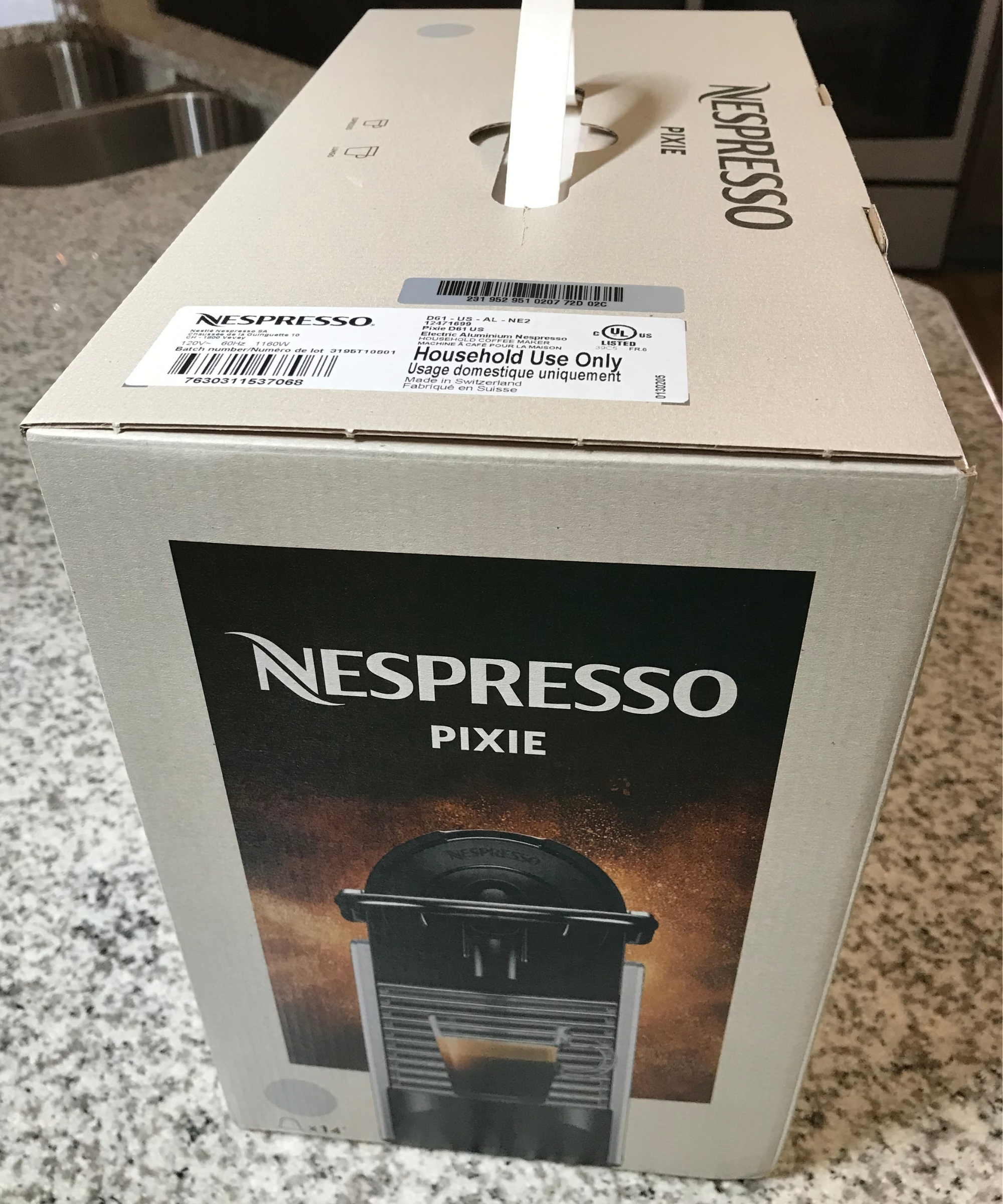
There’s also a protective plastic covering covering this popular pod coffee maker. After removing it, I merely needed to attach the drip tray and grid and remove the stickers. The parts of the espresso machine include the drip tray, drip grid and cup support, water tank and lid, and capsule container. The Nespresso Pixie also includes cord storage underneath. After determining the appropriate length, the excess cord can be stored in the channels underneath.
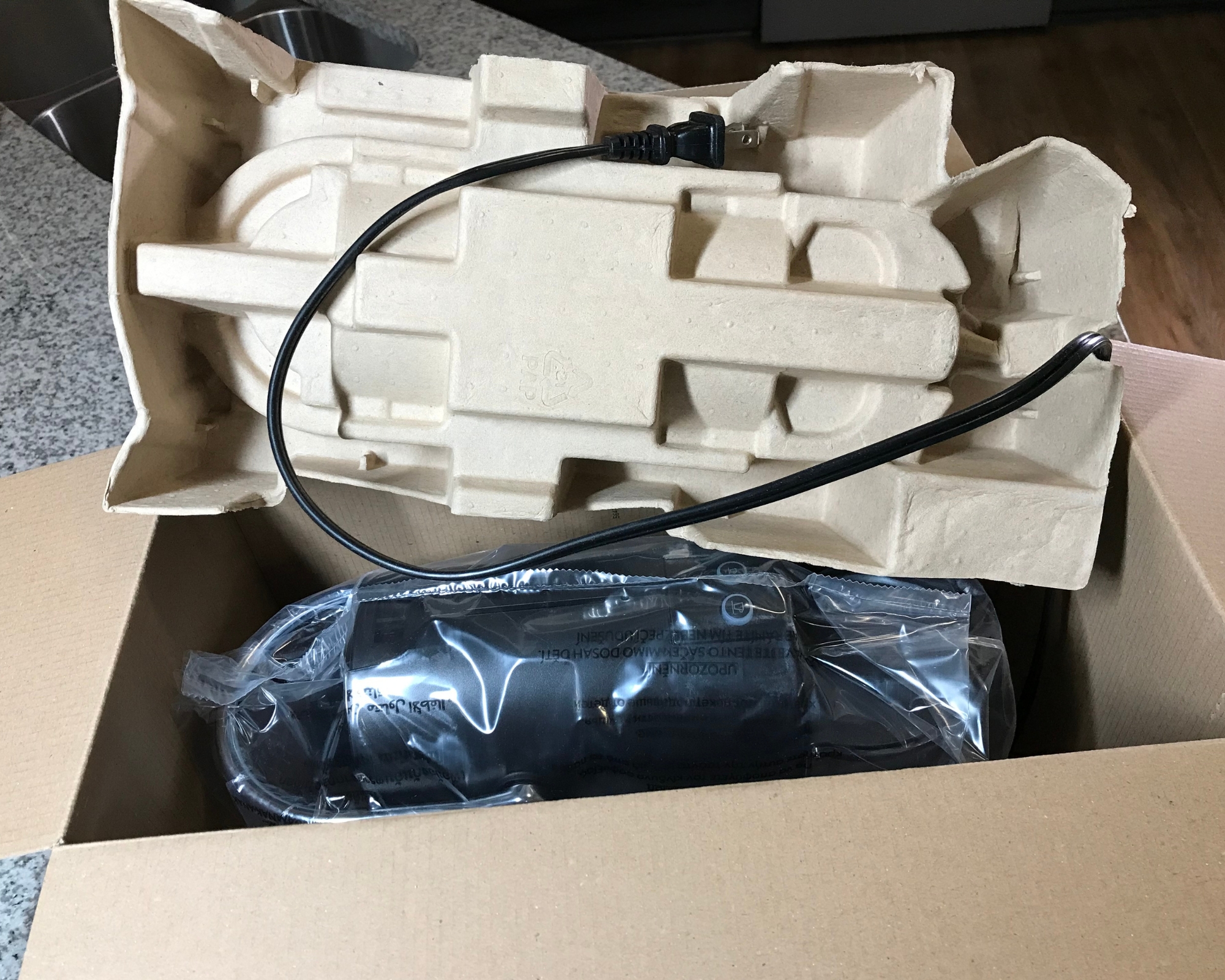
According to the Amazon page, the Nespresso Pixie ships with a set of 16 Nespresso capsules, and according to the text on the box that was shipped to me, 14 should have been included. However, I only received five capsules.
Using the Nespresso Pixie
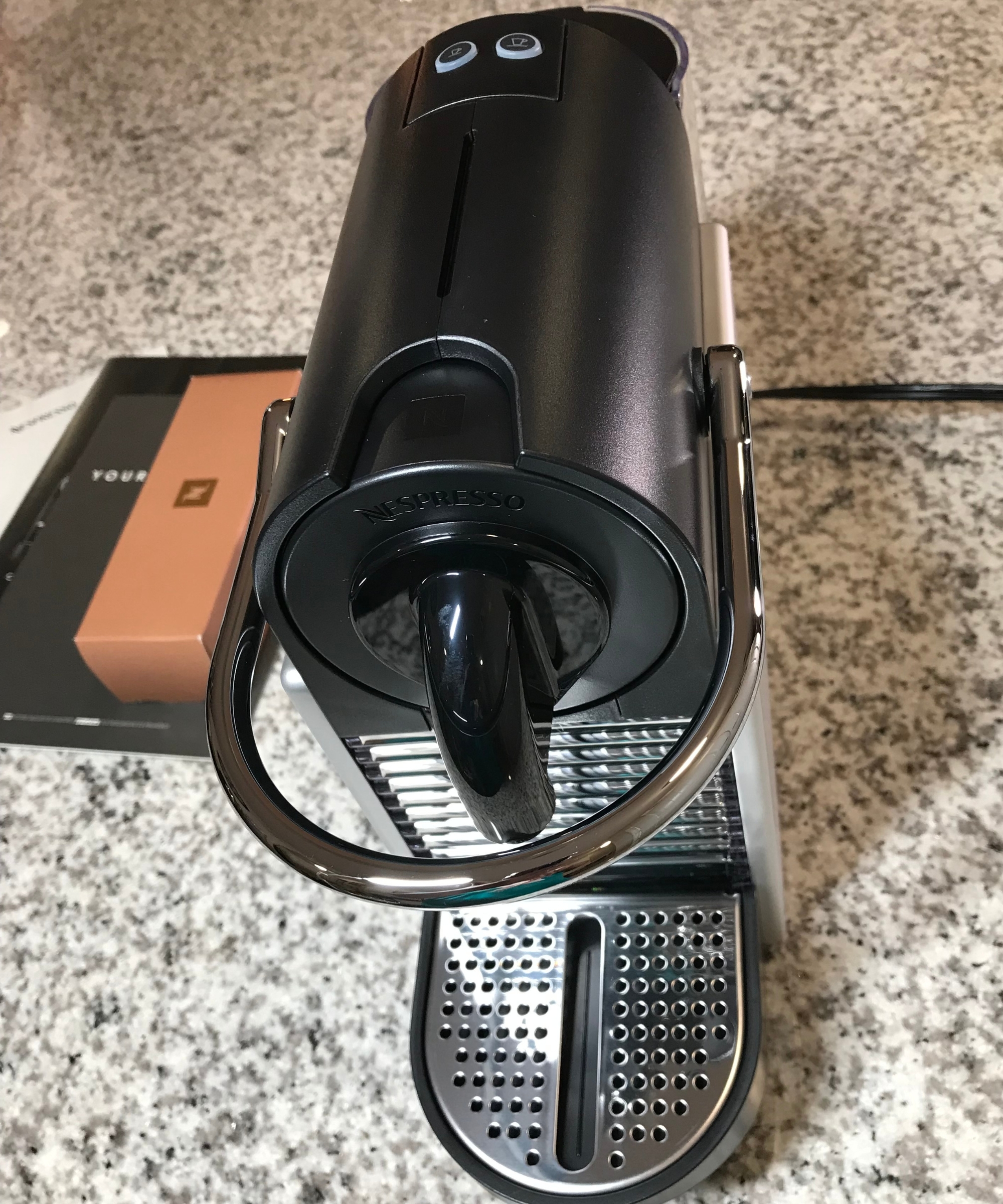
The Nespresso Pixie Espresso Maker is certainly user-friendly, unlike some single-serve coffee makers with such extensive instructions that I would brew a cup of coffee (on another machine) and then sit down to read through them.
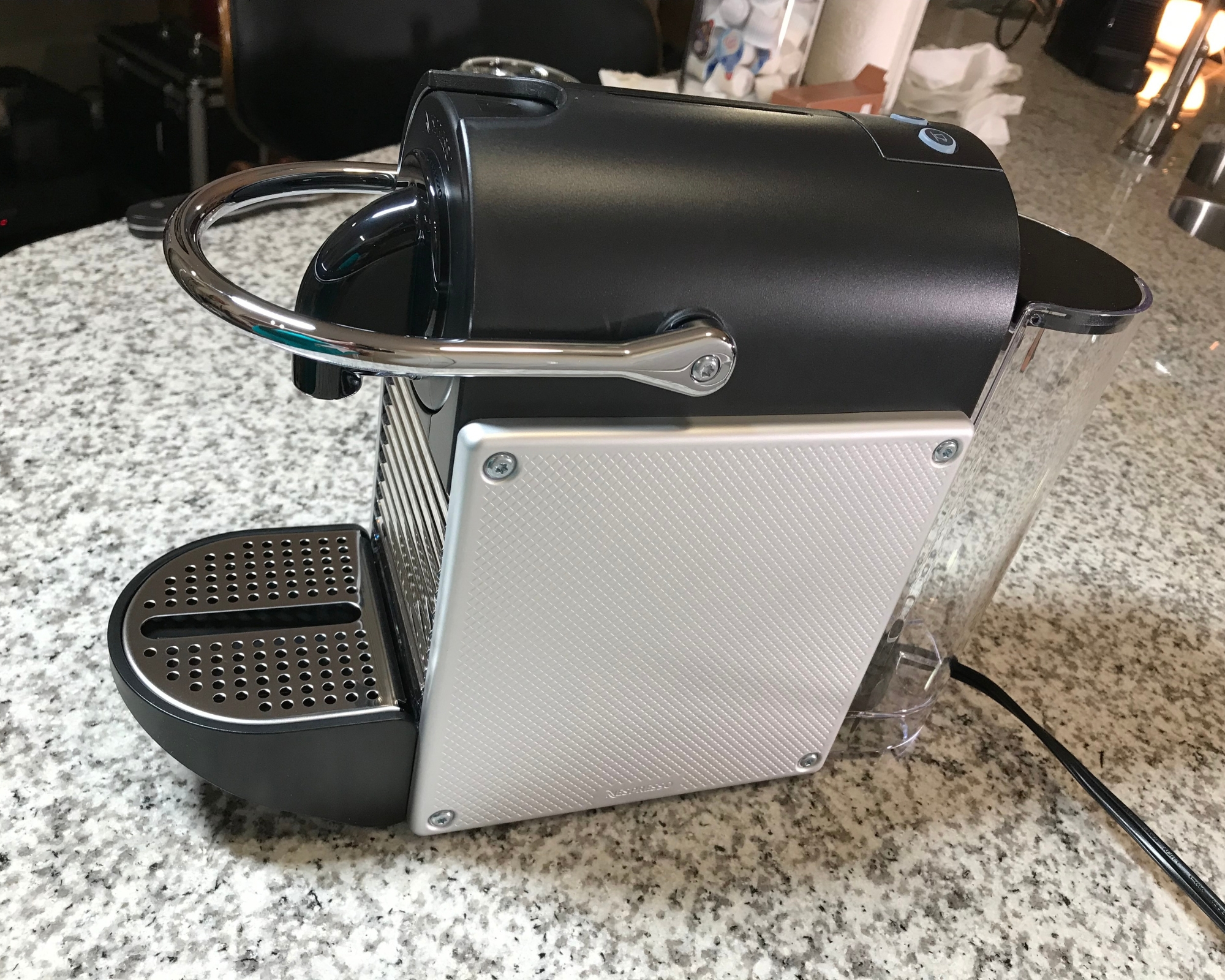
The 20.3-ounce water tank is removable, which makes it easy to fill with water — and also easy to empty and fill. However, it was probably the only fussy part of the espresso maker. That’s because of the hooks on the back side that have to line up perfectly or the tank can’t be properly inserted.
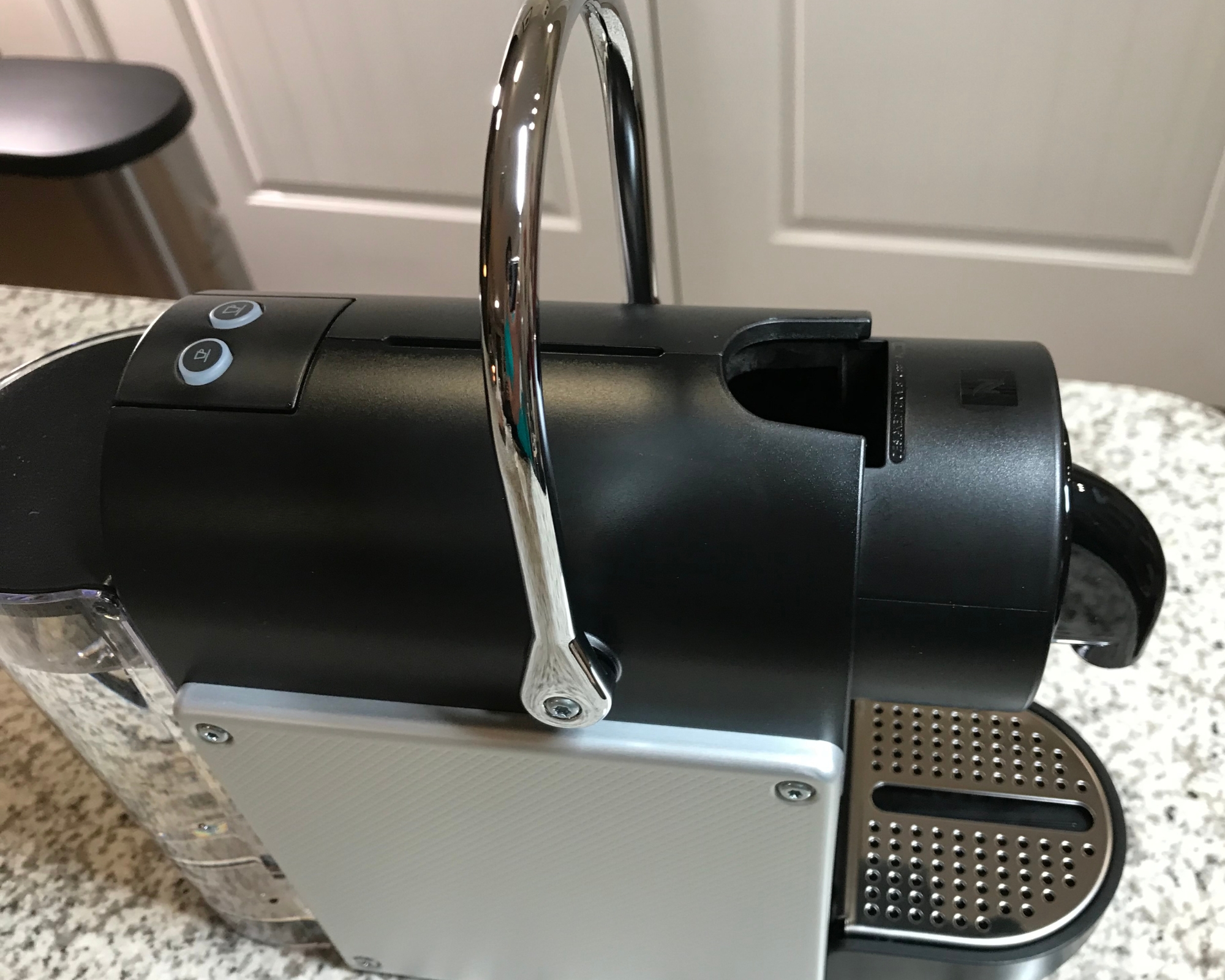
Many water tanks have some sort of additional support. What makes this process noteworthy is the fact that these fasteners are curved, so instead of inserting the water tank and pushing it flush against the back of the machine, the water tank has to be inserted at an angle for the hooks to go in correctly.
In the course of a week, it took at least two tries each time to successfully attach the water tank. Needless to say, I filled the tank with water while it was in place instead of trying to manipulate the hooks with the added water weight.
Using the Nespresso Pixie
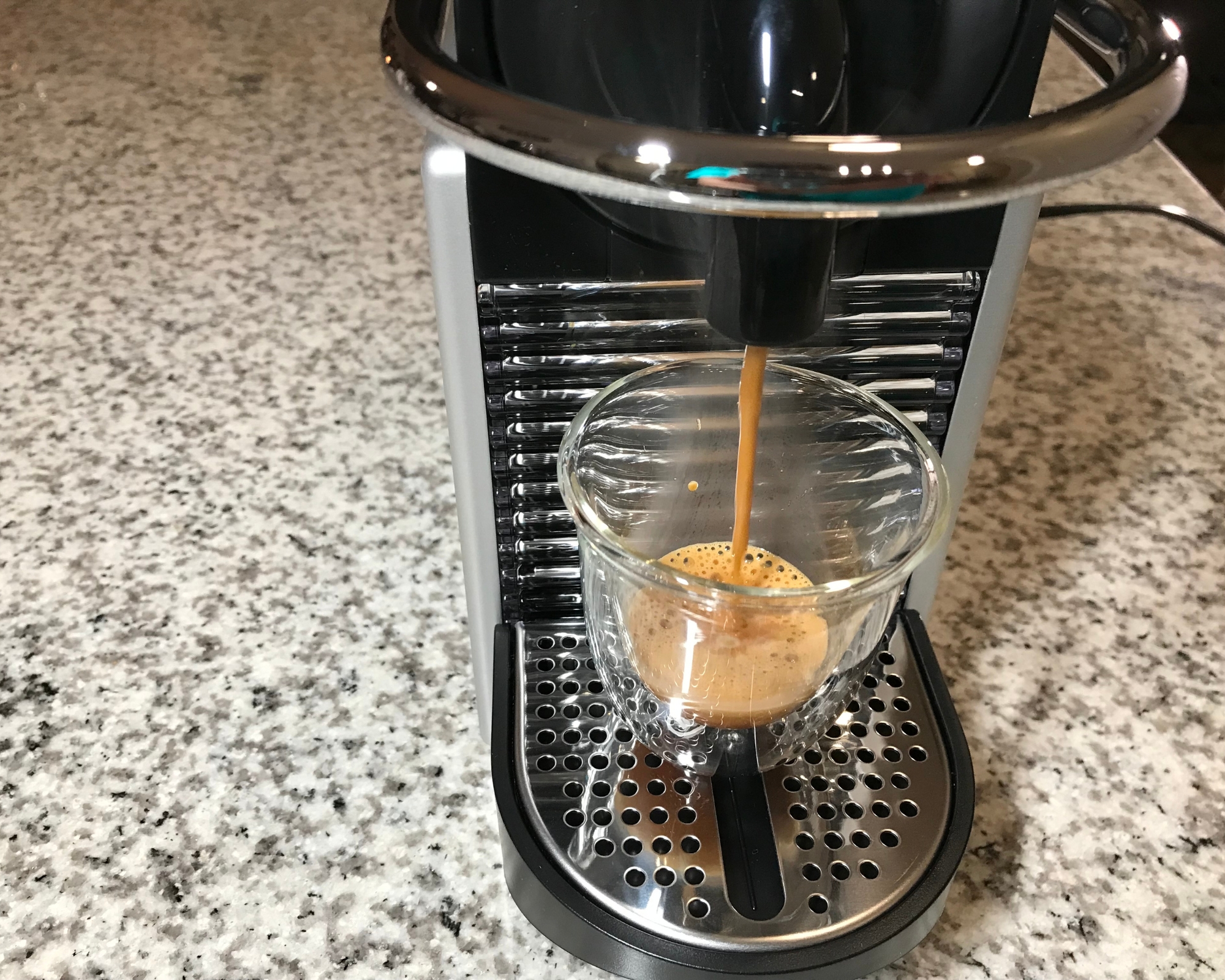
For the first time using the Nespresso Pixie, I filled the tank with water, placed a container under the coffee spout, turned the machine on, and pressed the Lungo button to rinse the machine. This process is recommended to remove any dust or debris from the manufacturing process. Per the instructions, I repeated this process 3 times.
Note: There’s no fill line on the water tank, but that shouldn’t be a problem for most people since you’re only making small quantities of coffee.
If you’re a fan of simplicity, you’ll appreciate that there are only two buttons on the machine: Espresso and Lungo. Raising the lever on top (which looks like a carrying handle for the machine — but it’s not) causes the capsule compartment to open. I inserted a Nespresso capsule, lowered the level, and pressed the Espresso button.
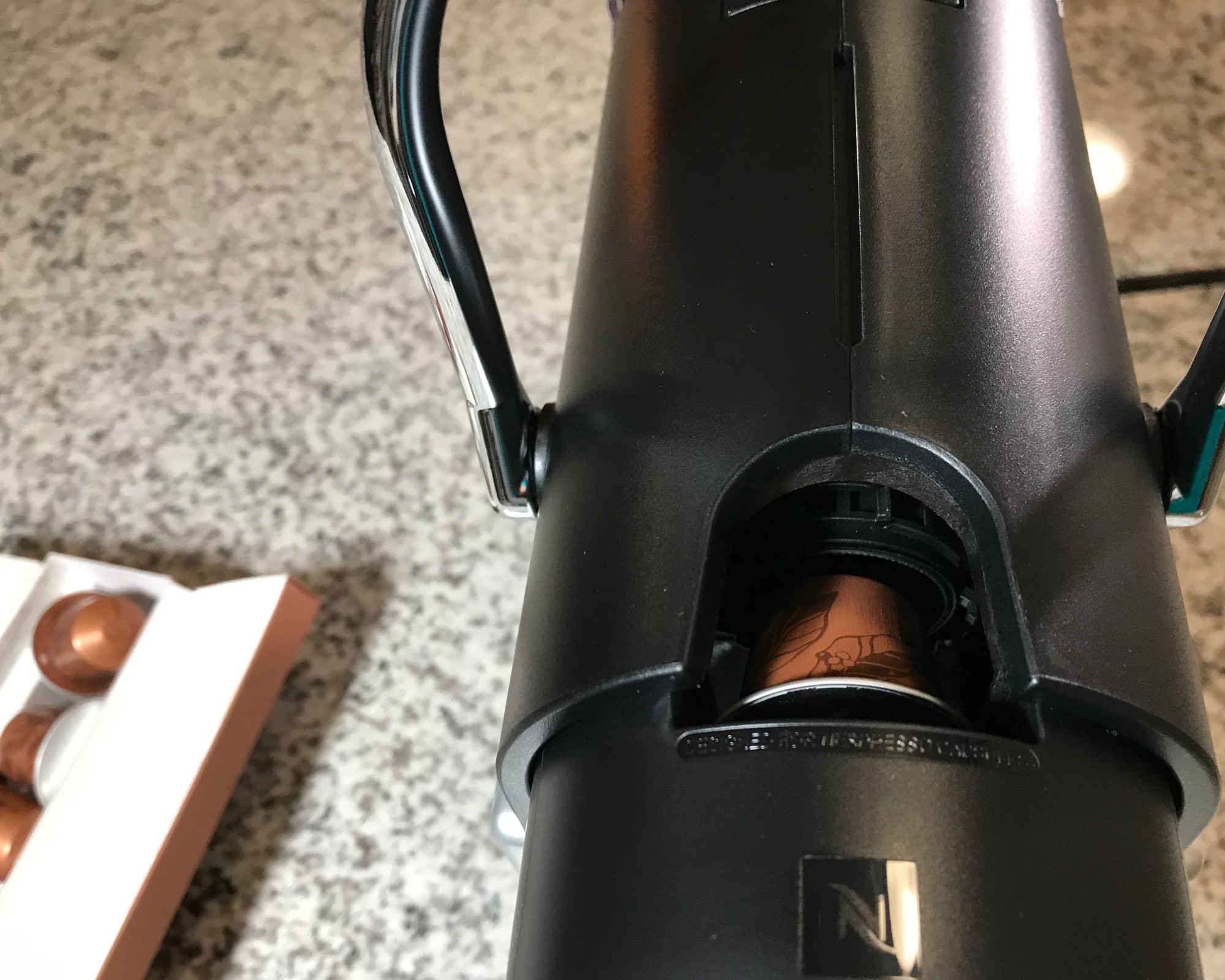
Another impressive feature is how quickly the Nespresso Pixie works. As a result of the 19-bar high-pressure pump used to extract flavor and aroma at the right time, it really did take around 25 seconds for the system to reach the ideal temperature and start the brewing process.
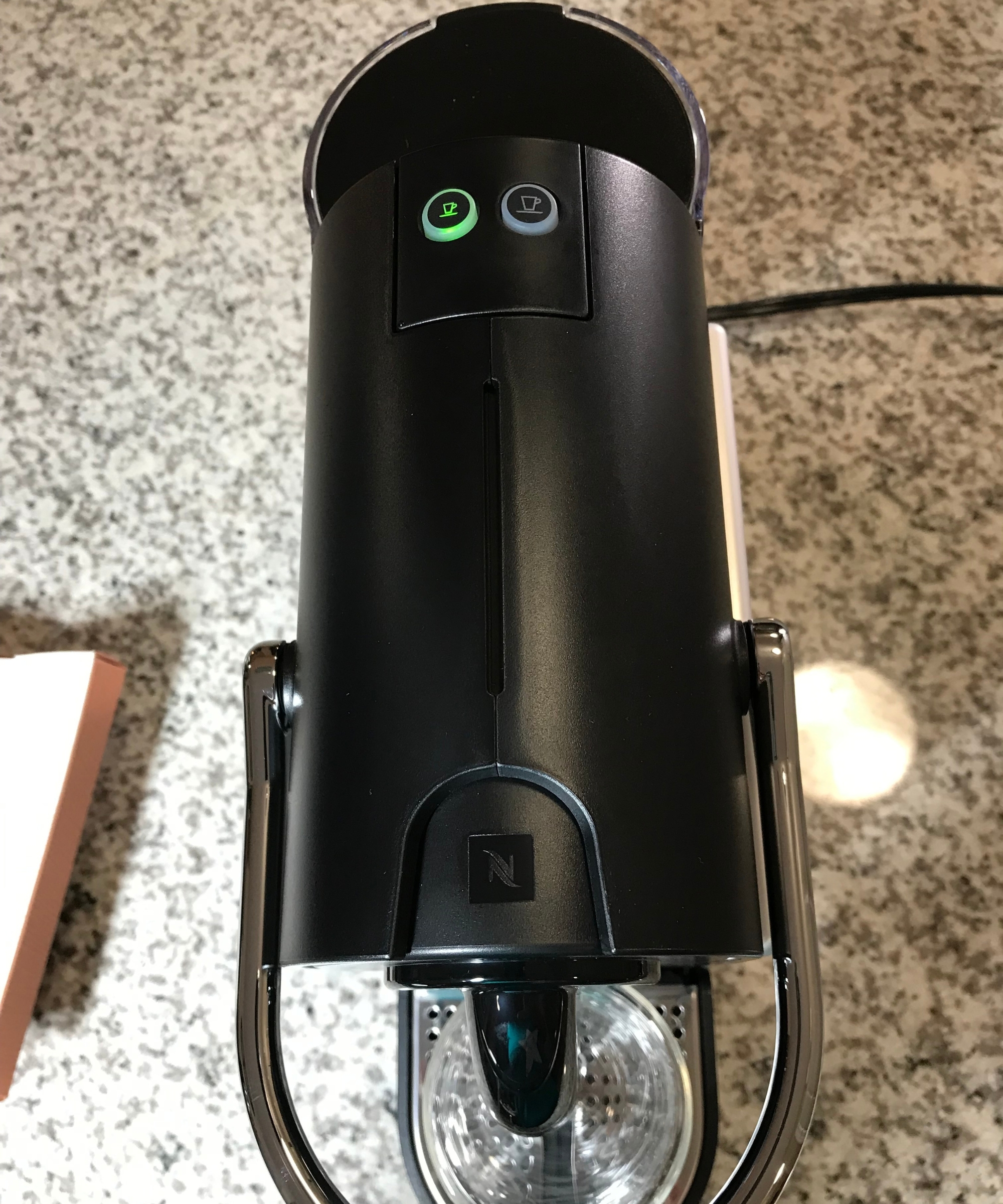
During the preparation process, the light (for Espresso or Lungo) will blink, and then the light will be steady when it’s ready to start brewing. I was pleasantly surprised to see that the machine also provided a crema layer, albeit an artificially-spun one. The Nespresso Pixie also has adjustable settings. For example, it automatically shuts off after nine minutes. However, the settings can be changed to stay on for 30 minutes.
Cleaning and maintaining the Nespresso Pixie
Wiping down the exterior fascia and parts
The used capsule container can hold 9–11 capsules before it needs to be emptied. Unlike most espresso makers, the used capsules are visible in the container, which may or may not be problematic to some — but it’s worth mentioning.
Cleaning the coffee maker is quite easy. Since the used capsules are automatically ejected into the capsule container, it’s merely a matter of emptying that bin into the trash. This doesn’t even have to be done on a daily basis since the bin holds 9–11 used capsules (however, I’m the type of person who prefers to remove the used capsules every day).
Every day, I also emptied the drip tray and base to remove any water inside. Using warm water and a few drops of dish soap (i.e: Palmolive's fragrance free detergent on Amazon), I cleaned the drip tray, base, and water tank. Then, I used a damp microfiber cloth (like these AIDEA ones on Amazon) to clean the machine’s exterior and wipe around the inside of the machine.
Descaling the Nespresso Pixie
The Nespresso Pixie hasn’t been used enough to require descaling, but it’s also a simple process: Pour Nespresso descaling solution into the water tank, then fill the tank with water. After placing a container under the coffee outlet, turn the machine on, and press the Espresso and Lungo buttons for five seconds at which time. Both LEDs will blink. Then press the Lungo button and the water tank will empty into the container. Once this cycle is complete, Nespresso’s instructions are to take the water in the container pour it back into the water tank, and start the descaling cycle again. The final steps are to empty the container again, refill the water tank with fresh water, and then run two cycles to rinse out all of the solution.
Is the Nespresso Pixie right for you?
The Nespresso Pixie Espresso makes it quite easy and convenient to make Espresso and Lungo without having to use coffee grounds and portafilters. It’s hard to beat popping in a capsule and then ejecting it into the bin. The swiftness with which it brews, as well as the crema layer it produces allow the espresso maker to compete with more advanced and expensive competitors. Another selling point is the compact size, which works well in small spaces. also makes it a great option for small spaces — or for anyone who just doesn’t want a bulky machine. It quickly makes great-tasting Lungos and Espressos, and the silky crema layer on top makes it even more yummy.
However, you’re limited in the types of drinks you can make. For those who prefer lattes and cappuccinos, the Nespresso Lattissima One which comes with a single-serve, dishwasher-safe milk jug. It also has an exact milk measurement feature so you won’t waste milk.
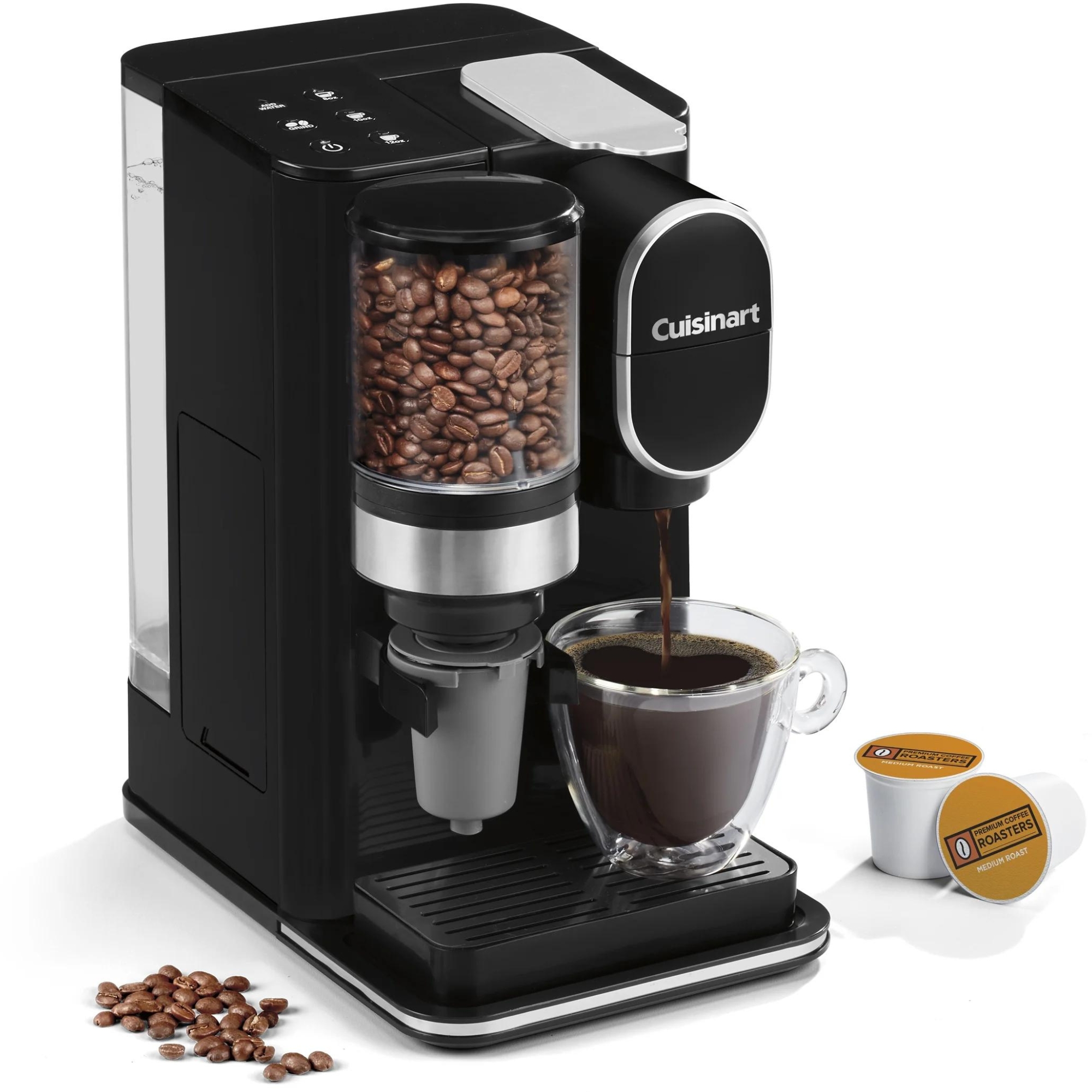
Price: Usually $149.95 Now $119.99 (save $30) at Amazon
Dimensions (in.): H12.67 x W7.28 x D11.02
With three ways to brew and three size options, the Cuisinart grind & brew single-serve coffee maker is one of the most flexible machines in the market. Novice users, (or those who want more choice) have the opportunity to use K-Cups, while intermediate and advanced coffee drinkers can use the eco-friendly reusable filter to make coffee drinks with grounds or whole beans. The generous 48-ounce water reservoir means that you can make up to six beverages before needing to refill the tank.
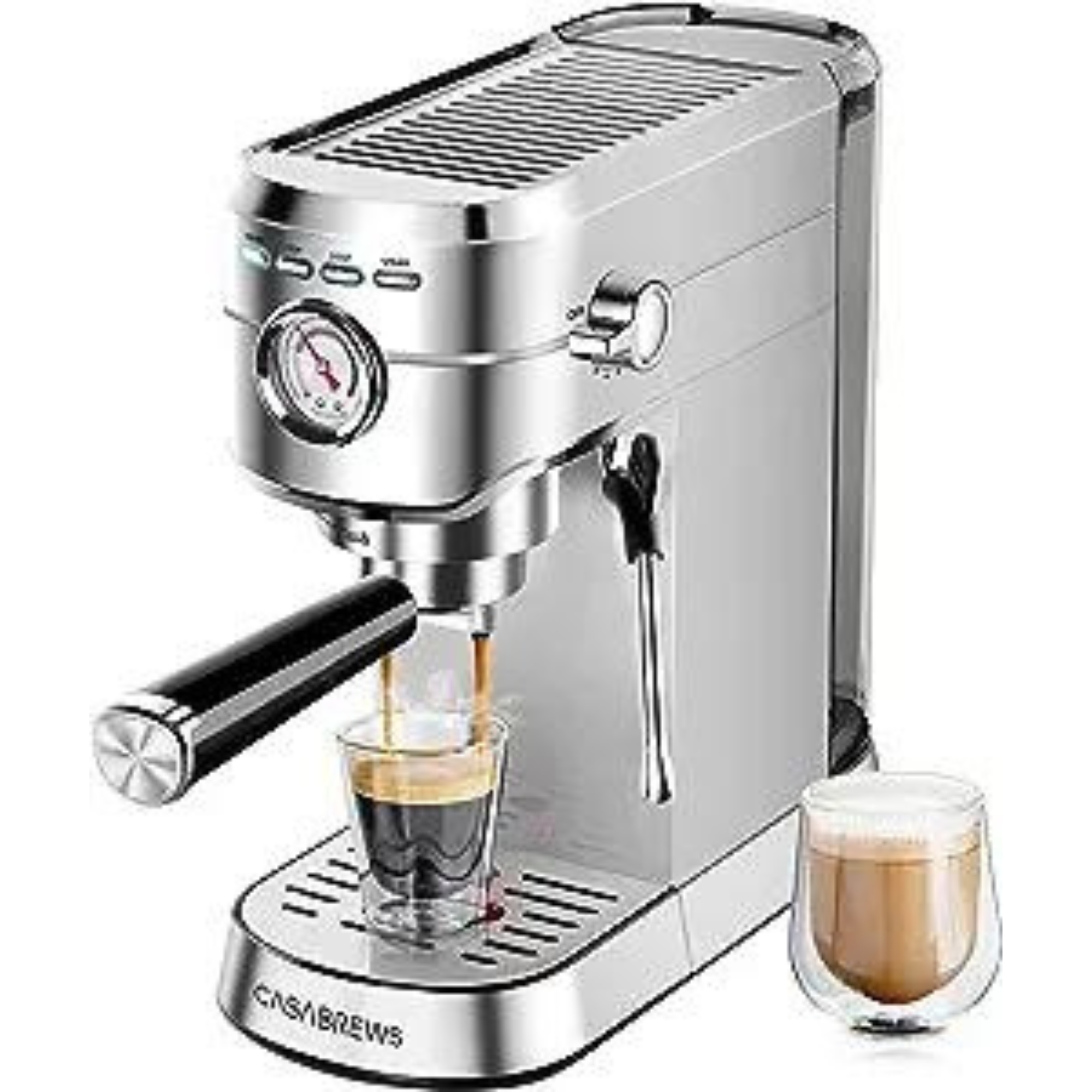
Price: Usually $164.99 Now $119.99 (save $45) at Amazon
Dimensions: H11.97 x W5.9 x D12.28
The Casabrews espresso machine offers the convenience of at-home espresso in an ultra-compact package. Despite its smaller size, it features a generous water tank and an easy, push-button operation. While the machine lacks some accessories that would be nice to have, like a milk frothing pitcher, it’s a solid choice for anyone looking to try their hand at espresso making.
Read the Casabrews espresso maker review
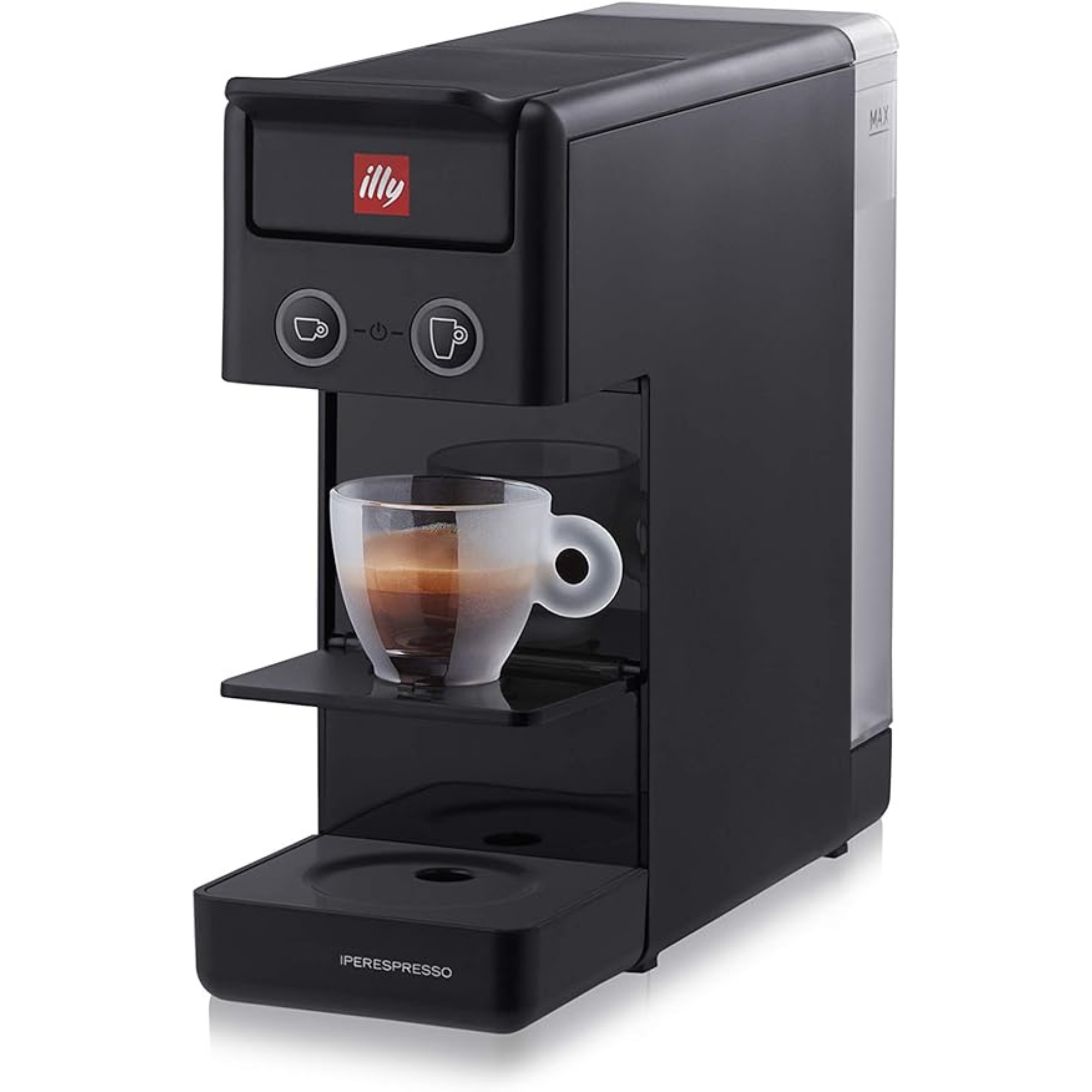
Price: $149
Dimensions: H10 x W3.94 x D11.73
For espresso fans who just want a minimalist yet efficient machine, this illy Y3.3 espresso machine does the job. The one-touch capsule machine is super easy to use, compact, and makes great-tasting, Italian coffee. But if you’re after more versatility, this is probably not ideal for you.
Good to know
Instructions
The machine includes a safety pamphlet and a 27-page instructions manual. The manual has detailed diagrams, but the written instructions are very minimal. Additional information would be helpful in some instances, such as in describing the descaling process. Since the instructions are provided in 18 languages and the languages aren’t separated by sections, they are somewhat cluttered.
Warranty
Nespresso backs this espresso machine with a one-year warranty against defects in materials and workmanship.
Where to buy the Nespresso Pixie
How we test espresso makers
Nespresso sent me the machine and I tested it for several weeks in my house before writing the review. I used the following criteria for the testing process:
Unboxing: I evaluated the product’s packaging, including how well it protected the product during shipping. I gave bonus points for packaging that is more sustainable, such as including cardboard packing instead of using Styrofoam.
Operation: When evaluating the machine’s operation, I looked for factors like reliable performance, how long it takes to warm up and brew, and how loud the machine’s operation is.
Beverage quality: I evaluated how well the machine prepared coffee and espresso, looking for qualities like a consistent brew and a hot temperature. I also considered the different flavors and options available in Nespresso’s capsules.
Ease of use: I considered how user-friendly the machine is, including the learning curve when using it for the first time and what consumers will experience when using it daily. I also considered factors like how easy it is to insert and remove capsules and to fill and insert the water rank.
Ease of cleaning: I considered how easily the machine can be cleaned and maintained, including whether components are dishwasher-safe. I also evaluated the descaling process and how easily it can be completed.







